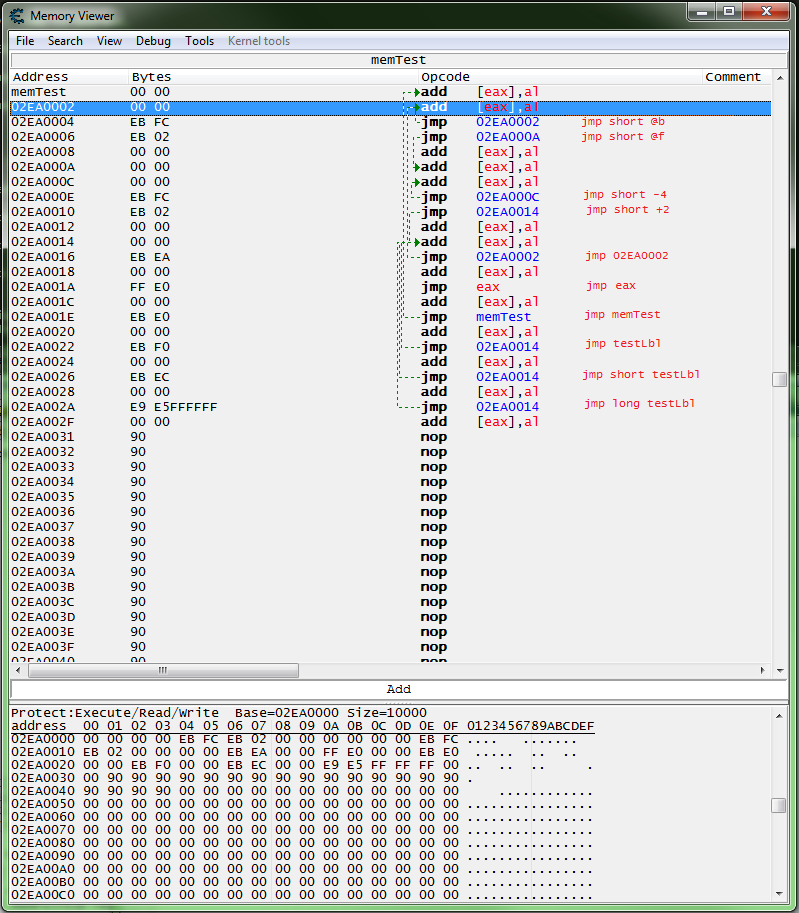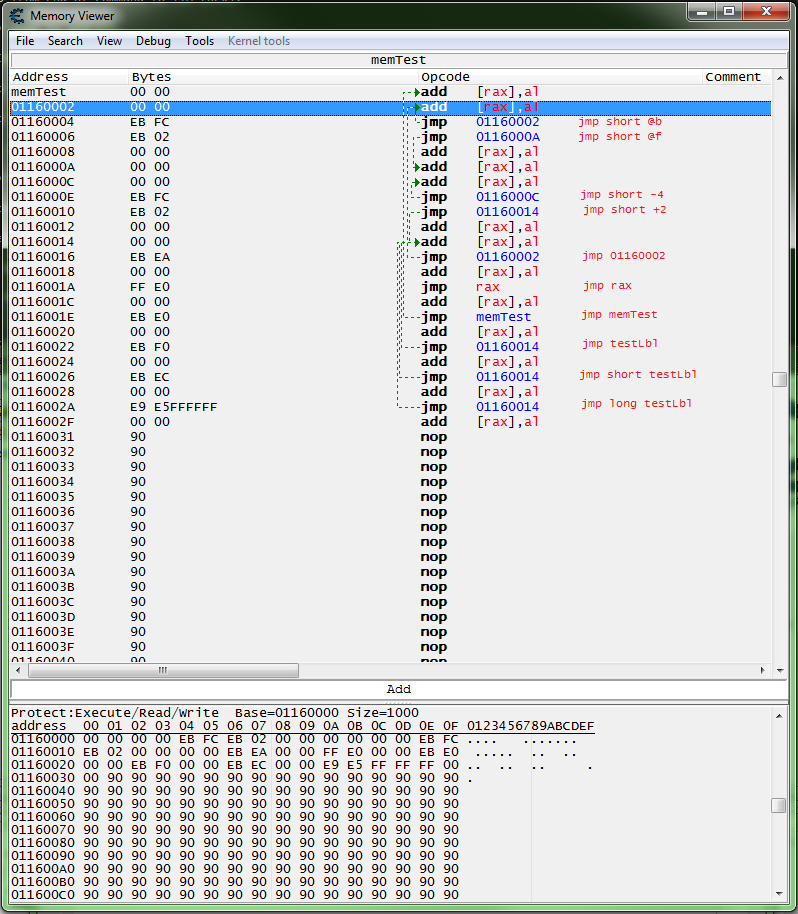Difference between revisions of "Assembler:Commands:JMP"
Jump to navigation
Jump to search
| Line 138: | Line 138: | ||
* [https://wikipedia.org/wiki/X86_instruction_listings wikipedia.org/wiki/X86_instruction_listings] | * [https://wikipedia.org/wiki/X86_instruction_listings wikipedia.org/wiki/X86_instruction_listings] | ||
* [https://wikibooks.org/wiki/X86_Assembly/Other_Instructions wikibooks.org/wiki/X86_Assembly/Other_Instructions] | * [https://wikibooks.org/wiki/X86_Assembly/Other_Instructions wikibooks.org/wiki/X86_Assembly/Other_Instructions] | ||
| + | * [http://x86.renejeschke.de/ x86.renejeschke.de] | ||
* [http://www.asmpedia.org/index.php?title=Main_Page asmpedia.org] | * [http://www.asmpedia.org/index.php?title=Main_Page asmpedia.org] | ||
| + | * [http://ref.x86asm.net/ ref.x86asm.net] | ||
Revision as of 04:31, 15 March 2017
command jmp size operand
Jumps to the given operand (address).
Transfers program control to a different point in the instruction stream without recording return information. The destination (target) operand specifies the address of the instruction being jumped to. This operand can be an immediate value, a general-purpose register, or a memory location.
This instruction can be used to execute four different types of jumps:
- Near jump
- A jump to an instruction within the current code segment (the segment currently pointed to by the CS register), sometimes referred to as an intrasegment jump.
- Short jump
- A near jump where the jump range is limited to -128 to +127 from the current EIP value.
- Far jump
- A jump to an instruction located in a different segment than the current code segment but at the same privilege level, sometimes referred to as an intersegment jump.
- Task switch
- A jump to an instruction located in a different task.
Command Parameters
| Parameter | Description |
|---|---|
| size OPTIONAL | The preferred size of the assembled address |
| operand | The address or symbol to jump to |
Examples
jmp +1A // Jump from end of command to +1A (hex).
jmp 00123ABC // Jump to address.
jmp 0000123456ABCDEF // Jump to address.
jmp eax // Jump to value of eax.
jmp rax // Jump to value of rax.
jmp someSymbol // Jump to user defined symbol.
jmp someLabel // Jump to label.
jmp short someLabel // Jump to label with short byte code.
jmp long someLabel // Jump to label with full address.
jmp @b // Jump back to closest label
jmp @f // Jump forward to closest label
Running this script in 32 bit mode:
globalAlloc(memTest, 0x200)
label(testLbl)
memTest:
add [eax],al // db 00 00
@@:
add [eax],al
jmp short @b
jmp short @f
add [eax],al
@@:
add [eax],al
add [eax],al
jmp short -4
jmp short +2
add [eax],al
testLbl:
add [eax],al
jmp 02EA0002
add [eax],al
jmp eax
add [eax],al
jmp memTest
add [eax],al
jmp testLbl
add [eax],al
jmp short testLbl
add [eax],al
jmp long testLbl
add [eax],al
db 90 90 90 90 90 90 90 90 90 90 90 90 90 90 90 90
Running this script in 64 bit mode:
globalAlloc(memTest, 0x200)
label(testLbl)
memTest:
add [rax],al // db 00 00
@@:
add [rax],al
jmp short @b
jmp short @f
add [rax],al
@@:
add [rax],al
add [rax],al
jmp short -4
jmp short +2
add [rax],al
testLbl:
add [rax],al
jmp 01160002
add [rax],al
jmp rax
add [rax],al
jmp memTest
add [rax],al
jmp testLbl
add [rax],al
jmp short testLbl
add [rax],al
jmp long testLbl
add [rax],al
db 90 90 90 90 90 90 90 90 90 90 90 90 90 90 90 90

